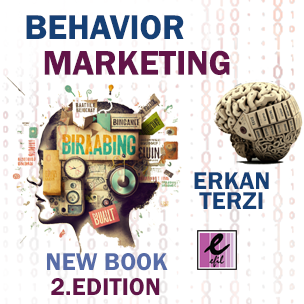Incorporating behavioral marketing insights, brands should craft strategies that tap into psychological and sociological dynamics to deliver the right message to the right audience at the perfect moment. Companies like Amazon utilize customer data to make personalized recommendations, while Starbucks builds emotional and social bonds through active engagement on social media platforms. Moreover, marketing research consistently highlights that effective digital media usage, personalized communication, and “always-on” campaign models significantly enhance brand awareness and consumer loyalty.
When it comes to digital media channel selection, many platforms undoubtedly come to mind. However, based on long-term industry research and various sectoral analyses, we can categorize the most efficient channel uses into two major outcomes:
- Strengthening brand or product value
- Increasing direct sales
Let’s dive deeper into each category and outline a strategic ranking.
Strengthening Brand and Product Value
This category typically attracts major investments from larger corporations. Whether you’re launching a targeted consumer campaign or a regional brand awareness initiative, focusing on brand value rather than direct sales gives your marketing team more creative flexibility. Activities under this umbrella often include:
- New product introductions
- Protecting or elevating brand reputation
- Enhancing product appeal
- Launching competitive positioning campaigns
- Promoting new sub-brands
- Conducting brand health assessments
- Executing consumer research projects
The ideal digital channel ranking for these efforts is typically:
- YouTube
- Programmatic Advertising
- Google Display Network (GDN)
- Google Search (SEM)
- LinkedIn (particularly for B2B initiatives)
Of course, factors such as target audience, advertising budget, and campaign objectives can shift this hierarchy slightly. But following this general order usually leads to strong brand-building results.
Driving Direct Sales
If boosting direct sales is your main focus—whether you’re an established name or an emerging brand—the priority shifts toward conversion-oriented channels. Brands aiming for measurable sales results should prioritize their efforts in the following sequence:
- Google Search (SEM)
- Programmatic Advertising
- Google Display Network (GDN)
- YouTube
- LinkedIn (for B2B cases)
According to 2021 figures, Instagram leads in Turkey with over 65 million active monthly users—a figure that continues to grow steadily. Platforms like Instagram, which offer both visual content and interactive engagement, naturally increase ad visibility across wider audiences.
Yet beyond audience size, the real key for brands lies in targeting accuracy.
Unlike traditional marketing where broad-based mass advertising was the norm, today’s digital environment demands working with platforms that deliver the highest quality consumer signals.
To illustrate:
- Google’s ecosystem (Gmail, YouTube, Maps, Android, Google Drive) offers unrivaled targeting depth.
- Meta’s ecosystem (Facebook, Instagram, WhatsApp, IGTV) is another powerful signal hub.
If we rank digital platforms by targeting precision:
- Instagram (owned by Facebook)
- YouTube (owned by Google)
- Programmatic Advertising
The more precise your targeting, the stronger your campaign performance will be.
It’s also crucial to understand the long-term impact of campaign consistency.
Launching short-term, high-budget campaigns without continuity causes valuable learning data to be lost. For example, a one-week $10,000 campaign will teach the ad algorithm about your audience—but once the campaign ends, the learning resets.
In contrast, always-on campaigns maintain momentum, allowing algorithms to refine targeting and lower your CPC (cost per click) over time.
Campaign Learning Tip:
Set a baseline of around 50 conversions to optimize your campaigns effectively.
If your budget is tight, lowering this target to around 15 conversions can still maintain campaign learning.
In summary, brands that invest in continuous campaigns, prioritize targeting quality, and optimize their platform strategies according to their marketing goals will stay ahead in today’s highly competitive digital environment.


